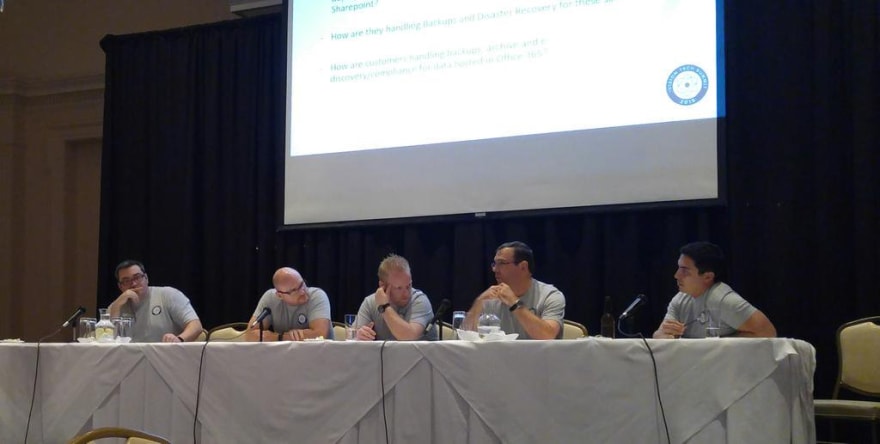I've spent a decade delivering technical presentations and during that time I've learned a thing or two. The purpose of this series is sharing those lessons with you. These aren't speaker best practices or secret tips to turn you into a top tier speaker, but practical advice based on personal experience.
In this series:
- Why Speak?
- Where to Speak?
- Talk Formats (you are here)
- Call for Presentations (CFP)
- Build Your Presentation
- Practice and Feedback
- Prepare to Travel
- The Day of Your Presentation
- After the Talk and Summary
👉🏻 Talk Formats
Did you know there are several different styles (or "types") of presentations? Here are a few popular formats.
- ⚡ Lightning talk A personal favorite of mine, these are short (5 - 15 minute) minute presentations designed for maximum impact in minimal time. Stripping your presentation down to a short period captures the essence of what you are trying to convey. It can be easier to prepare and practice these talks as well. In my opinion, this is the best type of session. Why? Because people tend to have short attention spans, so I suspect the shorter sessions have more impact.
Liquid error: internal
- 🗣 Breakout session This is the common format of a classroom-style presentation with you speaking for anywhere from a half hour up to 75 minutes. I personally find that 45 minutes is a "sweet spot" and don't like the longer formats but be prepared for anything in that range.
Liquid error: internal
Example of demos with step-by-step instructions for a breakout session:
 JeremyLikness
/
blazor-wasm
JeremyLikness
/
blazor-wasm
Blazor and WebAssembly examples (part of a Blazor presentation)
Blazor and WebAssembly

This repository contains samples for a presentation about using C# and .NET in the browser using WebAssembly with Blazor.
👋🏻 Introduction/Overview of Blazor
This repository is continuously built and deployed using free Azure Pipelines. If you're interested in how it was setup and configured to build automatically and deploy to low cost Azure Storage Static Websites, read Deploy WebAssembly from GitHub to Azure Storage Static Websites with Azure Pipelines.
Presentation
To see how Blazor compares to other SPA frameworks like Angular, read: Angular vs. Blazor.
Demos
This section contains step-by-step instructions to execute each of the demos.
Pre-requisites
The following should be installed for the demos to work:
-
emscripten for the
asm.jsand WebAssembly demos - http-service (node.js) to serve the…
- 👥👥 Panel A great way to get in front of an audience for the first time, instead of preparing demos and decks, you can participate in a panel and answer questions based on your insights and expertise. These may be open topics and questions or have a set of prepared questions you can research beforehand.

 Stephen Owen 🦊Deploy@foxdeploy
Stephen Owen 🦊Deploy@foxdeploy @mtrapnell @jeremylikness @jeorryb @brettsboss, digging into Cloud Architecture here @iVisionATL TechSummit18:10 PM - 26 Sep 2015
@mtrapnell @jeremylikness @jeorryb @brettsboss, digging into Cloud Architecture here @iVisionATL TechSummit18:10 PM - 26 Sep 2015
- 🗝 Keynote The keynote is often the first session of the conference or the day, although many events host closing keynotes as well. The keynote is designed to set the tone or mood of the conference and kick everything off in a positive, energetic, and insightful way (or conclude with some powerful parting thoughts). Successful keynote speakers know their audience and build content that appeals to attendees and resonates with the theme of the event.
Liquid error: internal
Example keynote content:
Liquid error: internal
- 📣 General Session A general session is like a keynote. Events with multiple tracks will often have a general session that is not called a keynote because it's meant to be more like a breakout session that appeals to everyone.
- 🏗 Workshop Workshops usually last for hours or days and walk the audience from start to finish through a concept. They are often classroom style and feature hands-on labs that the speaker(s) assist with. If you enjoy teaching and mentoring, you may find you enjoy the workshop format. The caveat is it takes significantly more time to prepare than ordinary talks. For example, if I am doing a day long workshop (typically 6 hours of "active" content, the rest of the time is taken by lunch and breaks) I look at it as preparing 6 talks plus being able to follow the lab steps and verify that they work to produce a completed product.
Liquid error: internal
Example workshop:
 brminnick
/
azure-for-developers-workshop
brminnick
/
azure-for-developers-workshop
The Azure cloud is huge and the vast service catalog may appear daunting at first, but it doesn’t have to be!
Azure For Developers Workshop
The Azure cloud is huge (so that’s why they call it the cloud!) and the vast service catalog may appear daunting at first. It doesn’t have to be!
- Learn the browser-based UI of the Azure Portal
- Continue the journey with the built-in, ready-to-run Azure Cloud Shell
- Explore various ways to deploy web apps written in any language, on any platform, from virtual machines and containers to serverless technologies
- Add intelligence to your apps using Microsoft Cognitive Services
- Protect your apps by applying Azure’s built-in security features
- Diagnose problems and apply automated machine learning analysis with Application Insights
- Connect your apps with messaging services, load files into cloud storage and discover managed databases for SQL and NoSQL scenarios
- Tie everything together in a continuous delivery pipeline with Azure DevOps projects
Agenda
1 - Intro to Azure (pptx)
Let's start by learning the Azure basics!
We'll start by…
- 🔬 Lab Compared to workshops that involve active presenters, labs are typically self-guided activities with proctors to help. The audience is pointed to a resource that contains detailed instructions, and proctors are available to answer questions and help troubleshoot problems.
Example of a hands-on lab:
 JeremyLikness
/
azure-fn-file-process-hol
JeremyLikness
/
azure-fn-file-process-hol
Tutorial for file processing and importing to SQL leveraging serverless Azure Functions.
Use Azure Functions to process a CSV File and import data into Azure SQL
Extract, Transform, and Load (ETL) is a common business function that is often necessary for integration between different systems. Traditional approaches often involve setting up dedicated FTP servers then deploying scheduled jobs to parse files and translate them for business use. Serverless architecture makes the job easier because a trigger can fire when the file is uploaded. Azure Functions is small pieces of code that focus on a specific problem and are ideal for tackling tasks like ETL.
This tutorial demonstrates how to take a legacy process and migrate it to run 100% in the cloud using the Azure SQL Database-as-a-Service offering combined with Azure Functions. You start with a local development environment, build and test the process end-to-end, then create the cloud-based assets and deploy to Azure.
Background
The following concepts are covered in this…
- 👩🏻🏫 Open Spaces I love conferences that provide open spaces! These are ad hoc presentation areas. Usually you sign up for an open space with a presentation or even an idea for discussion. You get assigned a time slot and then anyone interested stops by to collaborate. It's usually more intimate and less pressure than a full presentation. Consider trying these out at a conference if you're not sure you are ready to take the stage. Often, I find topics include support for aspiring speakers.
Liquid error: internal
- 🐦🦜 Birds of a Feather Another casual way to share your knowledge: with "birds of a feather" you are encouraged to mingle with attendees to answer questions and share your insights. This is often done over lunch, and tables are labeled with either names or topics that people can sit to discuss. Birds of a feather facilitates comfortable and casual interactions.
Liquid error: internal
Pro-tip It's fine to share your talk at multiple venues, especially if you are speaking nationally and internationally. Every audience is a fresh opportunity to engage with more developers. I welcome feedback and constructive criticism for my sessions, and often find by taking that feedback and tweaking my talk it is much better on the fifth delivery compared to the first. I will also often craft a talk based on the longest session I'll give (60 or 75 minutes) and then trim it back to create condensed versions for shorter speaking slots.
Previous Where to Speak?
Next Call for Presentations (CFP)
The example talk here is a presentation called "Intro to TypeScript" that I delivered to a local user group, The Atlanta JavaScript Meetup Group.











Top comments (1)
This was a great article. Thanks for sharing. I'll keep this in mind as I prepare any presentation as it keeps things targeted much more effectively